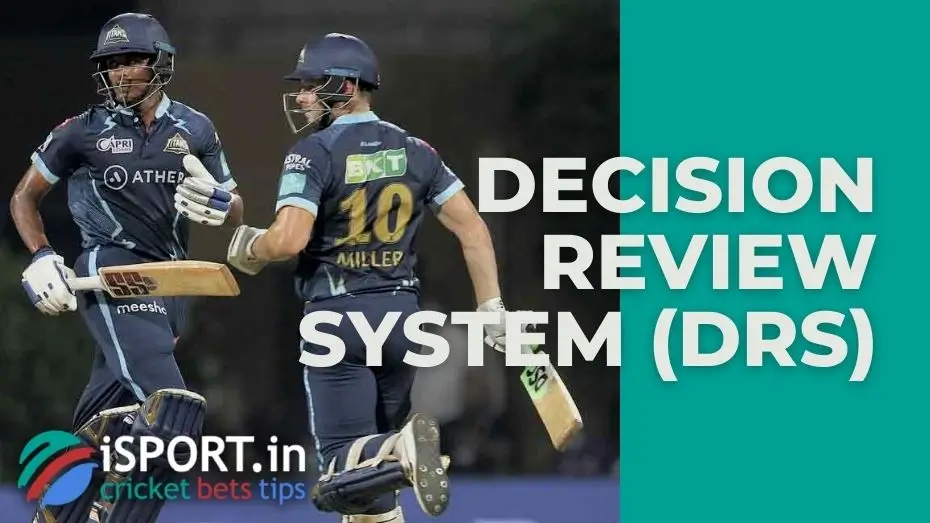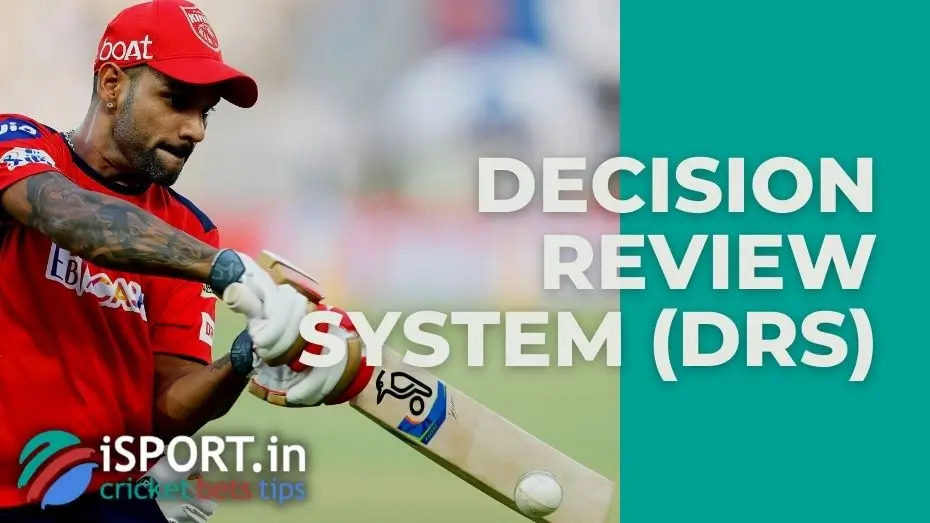Decision Review System (DRS)

Cricket uses the Decision Review System (DRS) to assist referees and other officials in contentious situations. Umpire Review is a process where a third referee comes into play. Both the main referees and the players can invite him to participate in the game.
Decision Review System (DRS): Essential
A system of several components is used to assist the third referee in a match:
- Cameras that allow you to track the trajectory of the ball. They are most commonly referred to as Hawk-Eye. This option works after both bowlers’ and batsmen’s hits. It can also be used to see if the ball has reached the border.
- TV replays.
- Microphones with which you can understand whether a ball hit the wicket or not. Cricket uses the Snickometer system.
- A device with an infrared image that helps to detect changes in the temperature of the ball after it hits the wicket. The system was criticized after The Ashes in 2013. After that series, players claimed that the edges of the Hot Spot were poorly standed out due to the use of silicone tape. Later, the participants’ assumptions in the matches of The Ashes-2013 were confirmed by researchers at the Massachusetts Institute of Technology.
The Decision Review System (DRS) was first used in test cricket matches in 2008. For the previous 16 years, referees had access to a similar version of the system, but third referees could come into play only in a few cases.
In the One Day International format, DRS was first used in 2011 in the series between England and Australia, and in the Twenty20 International format in 2017 in the playoffs of the Pakistani Super League.

Decision Review System (DRS): a history of the emergence
The emergence of the Decision Review System (DRS) in cricket was gradual. In the 21st century, an additional option was added to existing technologies since 1992, which helped determine whether a batsman was knocked out of the game or not. It was developed by Sri Lankan lawyer Senaka Weeraratna. He expressed this idea back in 1997, but it was possible to implement it only in 2008 after the approval of the International Cricket Council. The Decision Review System (DRS) was tested in a match between Sri Lanka and India. When DRS began to be used in all cricket formats, the International Cricket Council intended to make it compulsory for all competitions. Later, the leaders of this organization abandoned this idea.
The Decision Review System (DRS) has undergone a number of changes:
- In 2012, a decision was made to increase the percentage of uncertainty when the ball hits the pad of the batsman’s bat.
- Since autumn 2013, each team within 80 overs could use two opportunities to watch a controversial episode. Previously, two attempts were given for an inning. It was decided to return to the previous rules in the 2017 season. Due to the coronavirus pandemic, there are fewer officials at matches than before, so since of summer 2020, the International Cricket Council has temporarily allowed participants to use three views per inning.
- In 2016, the system was improved, and the percentage of uncertainty was reduced to a lower percentage of uncertainty than it was when the system was launched.
Since 2014, TV viewers have been able to see the process of how the third judge makes decisions. With the help of the TV signal, the picture and the sound of communication between the judges are transmitted. Sometimes such pauses are of great interest.
Decision Review System (DRS): Judicial Rights
Judges use the Decision Review System (DRS) in four cases:
- Run out. A case in which the referees want to ascertain whether a cricketer has been knocked out. There may also be times when it is difficult to determine which player will run to the edge of the pitch first.
- Caught and Obstructing. Sometimes a player can catch the ball at a high point, and the referee cannot reliably determine whether the ball has bounced off the batsman before.
- Right delivery. The referees may check if the bowler throws correctly, which results in the elimination of the batsman.
- Boundary calls. Used when the referee is not sure whether the ball has crossed the border or not. This is important because a cricketer earns 6 points for crossing the border, and only 4 points for not crossing it. At times, the opposing fielders try to catch the ball, not allowing the other team to earn the maximum number of points.

Decision Review System (DRS): Player Rights
Cricketers can refer to the Decision Review System (DRS) in two ways:
- If a team is on the batting side, players can request a review of the play to ensure their player is not eliminated.
- If a team is on the bowler’ side, cricketers ask if the opposing player is eliminated.
To request Decision Review System (DRS) assistance, you can raise your hands in a “T” shape. You can also use a bat and a hand. Any team can make requests until they reach the limit.
Decision Review System (DRS): The Ultimate Solution
In practice, cricket field judges’ decisions are canceled only in cases when an error is clearly visible. The International Cricket Council leaders would like the Decision Review System (DRS) to be used universally, but there are several barriers to this. For example, poor countries cannot afford to use it economically. The system is partially used in some domestic championships.
